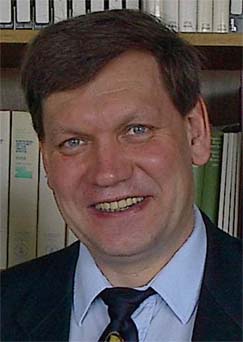Welcome to our Meeting in Washington, DC, November 6!
Greetings,
We are pleased to invite you to our meeting in Washington, DC, which will take place on this Thursday, November 6 (please see details attached below).
Feel free to disseminate information about this upcoming meeting among your friends and colleagues, who may be interested.
Hope to see you there!
Kind regards,
-- Leonid and Natalia
-------------------------------------------------
-- Leonid Gavrilov, Ph.D., GSA Fellow
-- Natalia Gavrilova, Ph.D., GSA Fellow
Center on Aging, NORC at the University of Chicago
Website: http://longevity-science.org/
Blog: http://longevity-science.blogspot.com/
=========================================
Gerontological Society of America Interest Group meeting
SOCIETAL IMPLICATIONS OF DELAYING AGING
Thursday, November 6, 2014, 5:30 pm
Room 206, Walter E. Washington Convention Center
801 Mt Vernon Pl NW, Washington, DC 20001
1. New Findings on Old-Age Mortality: Scientific and Societal Implications
Leonid Gavrilov and Natalia Gavrilova (NORC at the University of Chicago)
Recently a spectacular failure of demographic forecasts for the oldest-old has happened - a gross overestimate of their numbers, which has profound societal and financial implications. Moreover, with new data analysis, a traditional view on the old-age mortality deceleration, levelling-off, and mortality plateaus has to be revisited. In humans and some other mammals, the risk of death continue to increase exponentially with age (Gompertz law) even among the oldest-old. This new finding represents a challenge for evolutionary theories of aging, and it has important implications for science and society.
2. Predictors of Future Longevity: Why the Variance May be More Informative Than the Mean
Aubrey de Grey (SENS Research Foundation)
Enormous effort, with depressingly little result, has been put into seeking "biomarkers of aging" - roughly speaking, predictors of how long it will be until someone dies or falls into permanent ill-health. But this has always been sought in terms of the expected remaining time until the defining event. I will make the case that we might do better to seek predictors of the variance of remaining longevity, or (a closely related parameter) the correlation of the candidate predictor with the mortality rate doubling time (MRDT). The main value of such predictors will be their relevance to extreme longevity, which is far more influenced by MRDT than by the Gompertz intercept. I will discuss the potential impact, both biological and social, of the discovery of such predictors.
3. Discussant - Paola Sebastiani, Professor of Biostatistics, Boston University
4. Open General Discussion
========================
We are pleased to invite you to our meeting in Washington, DC, which will take place on this Thursday, November 6 (please see details attached below).
Feel free to disseminate information about this upcoming meeting among your friends and colleagues, who may be interested.
Hope to see you there!
Kind regards,
-- Leonid and Natalia
-------------------------------------------------
-- Leonid Gavrilov, Ph.D., GSA Fellow
-- Natalia Gavrilova, Ph.D., GSA Fellow
Center on Aging, NORC at the University of Chicago
Website: http://longevity-science.org/
Blog: http://longevity-science.blogspot.com/
=========================================
Gerontological Society of America Interest Group meeting
SOCIETAL IMPLICATIONS OF DELAYING AGING
Thursday, November 6, 2014, 5:30 pm
Room 206, Walter E. Washington Convention Center
801 Mt Vernon Pl NW, Washington, DC 20001
1. New Findings on Old-Age Mortality: Scientific and Societal Implications
Leonid Gavrilov and Natalia Gavrilova (NORC at the University of Chicago)
Recently a spectacular failure of demographic forecasts for the oldest-old has happened - a gross overestimate of their numbers, which has profound societal and financial implications. Moreover, with new data analysis, a traditional view on the old-age mortality deceleration, levelling-off, and mortality plateaus has to be revisited. In humans and some other mammals, the risk of death continue to increase exponentially with age (Gompertz law) even among the oldest-old. This new finding represents a challenge for evolutionary theories of aging, and it has important implications for science and society.
2. Predictors of Future Longevity: Why the Variance May be More Informative Than the Mean
Aubrey de Grey (SENS Research Foundation)
Enormous effort, with depressingly little result, has been put into seeking "biomarkers of aging" - roughly speaking, predictors of how long it will be until someone dies or falls into permanent ill-health. But this has always been sought in terms of the expected remaining time until the defining event. I will make the case that we might do better to seek predictors of the variance of remaining longevity, or (a closely related parameter) the correlation of the candidate predictor with the mortality rate doubling time (MRDT). The main value of such predictors will be their relevance to extreme longevity, which is far more influenced by MRDT than by the Gompertz intercept. I will discuss the potential impact, both biological and social, of the discovery of such predictors.
3. Discussant - Paola Sebastiani, Professor of Biostatistics, Boston University
4. Open General Discussion
========================


